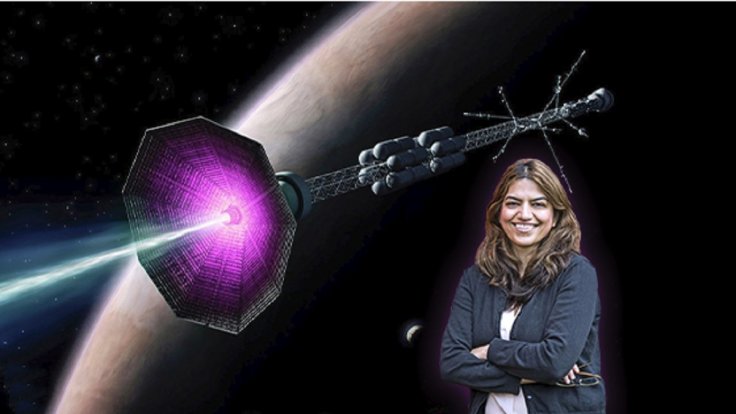For years, scientists have flirted with the idea of a nuclear propulsion system for rockets that would be faster than solid booster ones. It could dramatically cut down on the travel time to the moon and even Mars. But safety and radiation hazards have prevented it from applying on a rocket. With the next generation of space exploration now taking shape, a scientist has designed a rocket that is 10 times faster than those that use electric fields to propel forward.
Dr Fatima Ebrahimi from the US Department of Energy's Princeton Plasma Physics Laboratory (PPPL) has come up with a design based on nuclear fusion. It would shoot plasma out of the back of a rocket applying a magnetic field. The momentum generated from the conversion will propel the rocket forward faster than the proven thrusters.
"I've been cooking this concept for a while. I had the idea in 2017 while sitting on a deck and thinking about the similarities between a car's exhaust and the high-velocity exhaust particles created by PPPL's National Spherical Torus Experiment (NSTX). During its operation, this tokamak produces magnetic bubbles called plasmoids that move at around 20 kilometers per second, which seemed to me a lot like thrust," said Dr Ebrahimi, whose research paper was published in the Journal of Plasma Physics.

Plasma Propulsion
Nuclear fusion is an idea that has not only been proposed for meeting energy demands but also for space travel. It is the power that the sun and other stars run on. In the fusion process, it combines elements to plasma, a super-hot and charged state of matter. The plasma is so hot that electrons run free, generating a massive amount of energy.
Plasma propulsion isn't a new concept though. In 2017, an experimental satellite named Tacsat-2 was launched with a similar idea. But it used electric fields to propel particles, meaning it was not as fast as scientists had hoped. It offered a low specific impulse that was not enough to take a rocket to Mars. But in the new design, it accelerates using magnetic reconnection. In computer simulations, it showed that it could generate the thrust of hundreds of kilometers per second. The magnetic fields allow scientists to adjust thrust.
"Long-distance travel takes months or years because the specific impulse of chemical rocket engines is very low, so the craft takes a while to get up to speed. But if we make thrusters based on magnetic reconnection, then we could conceivably complete long-distance missions in a shorter period of time," Dr Ebrahimi explained.

How Does It Work?
Dr Ebrahimi's design stands out in three different ways. The first noticeable difference is maneuverability. As her concept allows changing the strength of the magnetic field, astronauts can manipulate the thrust that would allow better maneuverability.
Secondly, her concept thruster accelerates by ejecting plasma particles and plasmoids or a magnetic bubble. The latter offers greater propulsion that other thrusters don't use. The other difference is the magnetic field. Other thrusters of a similar concept rely on electric fields. But Dr Ebrahimi's design depends on a magnetic field that allows the thruster to contain even lighter atoms. That way, scientists can tailor the amount of thrust depending on a mission.
"By using more electromagnets and more magnetic fields, you can in effect turn a knob to fine-tune the velocity. While other thrusters require heavy gas, made of atoms like xenon, in this concept you can use any type of gas you want," Dr Ebrahimi said.
If the concept could be adopted into a rocket, it would help future astronauts to travel quickly, maybe to even a distant planet someday.









